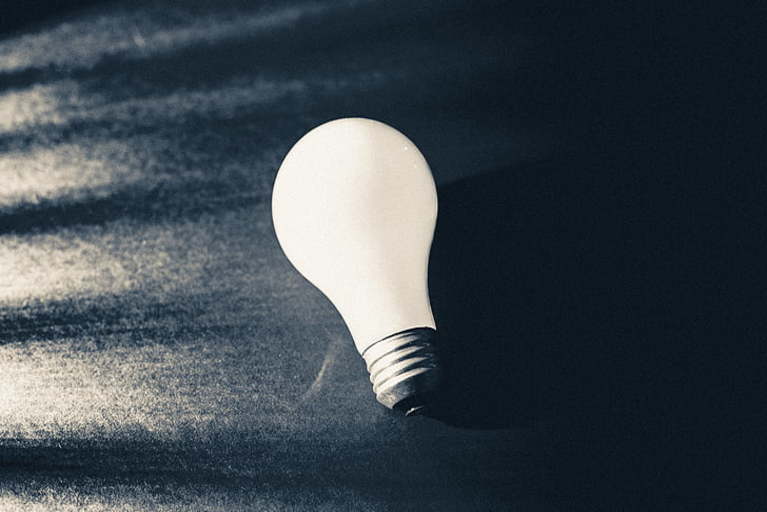
It is a thing which reduces your electricity bill. Interestingly we were not much aware of this invention even after approximately 40 years of its invention. A Revolution in electronics engineering which makes a drastic variation in technology. Many of us are not aware of this journey of revolutionary invention. So let us have a look at this small but effective discovery of human beings.
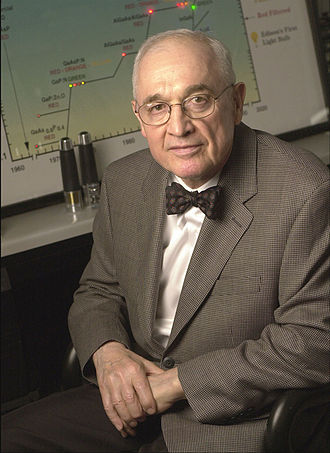
Nick Holonyak Jr, Image credit: Wikipedia
Origin of LED Bulb:
Nick was an American engineer who well known for his pioneering work with LED (Light emitting diode). Nick Holonyak Jr joined the General Electric (GE) electronics laboratory in New York. At that time several GE team members were working in the field of optoelectronics. Optoelectronics is a branch of electronics in which electric current is being converted into light. One of GE member who was also a colleague of Nick Holonyak Jr, Robert N. Hall had developed a laser using a semiconductor diode. Robert N. Hall’s laser emitted only infrared radiation, which lies beyond the range of human vision. Nick Holonyak Jr decided to make a diode device that would emit visible light. In 1962 an inventor Nick Holonyak Jr. invented an LED that gives ‘RED’ light.
A simple bulb needs a filament to produce light which increases power consumption but It does not have any filament to produce light, which makes it different and reduces power consumption!

Diode crystal structure
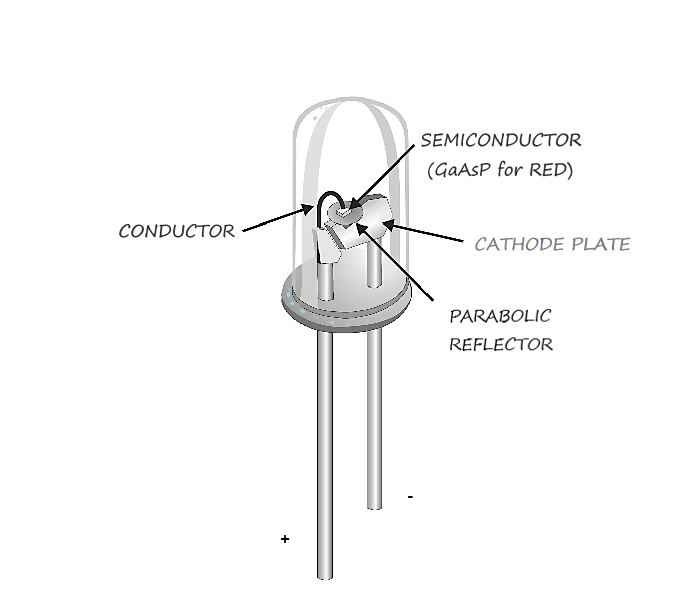
LED internal architecture
Internal Structure of the LED:
Before discussing about LED let us have a look at the structure of the semiconductor diode. When a P – type and N – type semiconductors formed a unijunction, this structure is known as a diode. A diode is an electronic component that allows current flow in only one direction. LED is a diode that emits light.
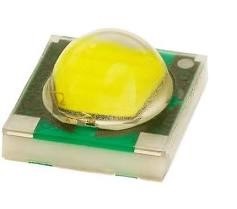
Dome type LED
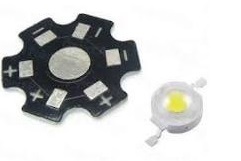
‘Aluminium’ heat sink and a LED
The wavelength emitted by LED depends on the semiconductor material, which is being used in the formation of LED. There are several types of LEDs. Some of them use as indicators in electronic devices whereas some of them are used to generate light. Nowadays a dome-type LED is in use to make LED bulbs.
Dome type LEDs generate bright light but it also generates a massive amount of heat. To handle this problem there are different techniques. One of the most popular methods is using ‘Aluminium Heat Sinks’.
Units inside it:
Have a look at different parts of the LED bulb. An LED bulb has the following parts:
- Bottom terminal
- Insulating case
- LED driver circuits
- LED plate with filters and voltage regulators
- Optic diffuser

Bottom Terminal
Bottom terminal:
Holding terminal connects with holder socket. As we know it is the input terminal of AC (110 to 220 Volts).

Insulating case
Insulating case:
Insulating case is made of Bakelite or good quality fibers. It provides body structure to the LED bulb. The main function of the insulating case to hold a rectifier circuit (also known as LED driver circuit). It provides a base for the Holding terminal, LED plate, and Optic diffuser.

LED driver circuit
LED driver circuits:
As we know that LED (Light Emitting Diode) needs DC current for its operation. This circuit is responsible to convert AC current to DC current. LED driver circuit operation is generally different from conventional rectifier circuits.
A conventional rectifier circuit step – down the input AC current by using a transformer and after that diodes are used to convert this input into unidirectional or direct current (DC current). But this LED driver makes changes in the frequency of input AC current (220v 50 Hz). They boost the frequency from 50 Hz to several GHz ranges and after that, it uses several voltage regulators to provide sufficient power to the LEDs.
Circuit power handling capacity is depending on its different electronics components. It mainly contains a few capacitors, resistors, and high-frequency ferrite transformers (approx. 60 GHz). The main benefit of using a ferrite transformer is that it has low hysteresis losses (so it increase the efficiency of the transformer). For example, you can see the image of a LED driver circuit.

LED Plate
LED plate with filters and voltage regulators:
This part of the LED bulb has several components including LEDs. LED plate generally contains aluminium heat sink to absorb the heat which is being produced by LEDs.
Its circuitry contains voltage regulator ICs to control the voltage fluctuation, few carbon resistors to control current flow in LEDs.
Here LEDs are connected in both manners – Parallel as well as Series. The parallel combination provides equal voltage and the series combination provides equal current to LEDs.

LED Bulb optic diffuser.
Optic diffuser:
This is the head of the led bulb. Its basic property is to diffuse the internal LEDs light towards the outer space of the bulb. Generally, it is made of plastic fibers that have good optical diffusion.
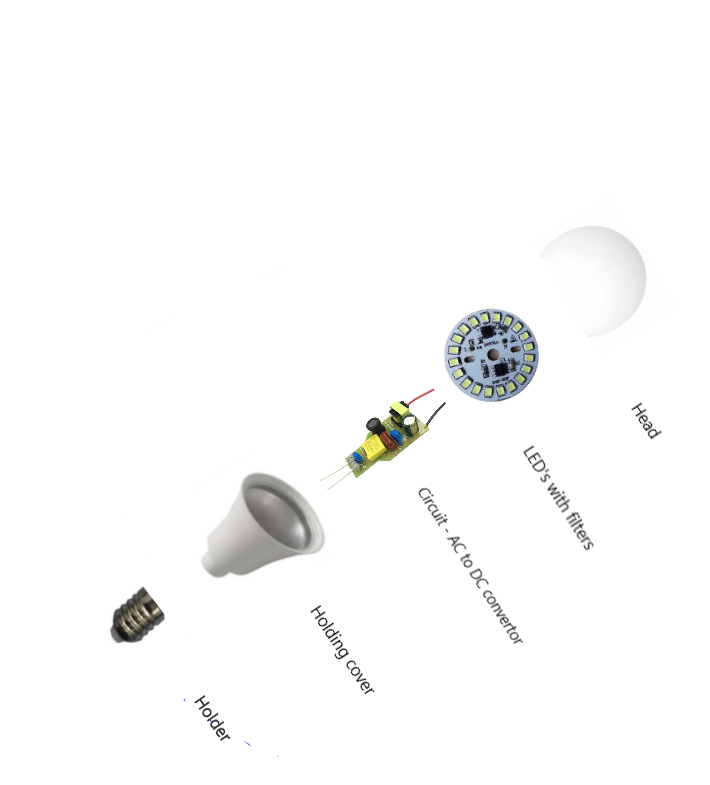
Now look at its bifurcated parts of the LED bulb:
In the first instance an input AC current comes to the bulb through the ‘Holding terminal’, in the second instance it goes through the LED driver circuit. This circuit converts input AC current into DC current. In the third instance, DC current comes toward the LED plate as an input. Voltage regulators and carbon resistors control this DC current and make it good for LEDs. When current flows through these LEDs, it generates a bright light. In the end, the optical diffuser diffuses this light into the outer ambience with proper intensity.
Thanks for reading. See you soon with another exploration!




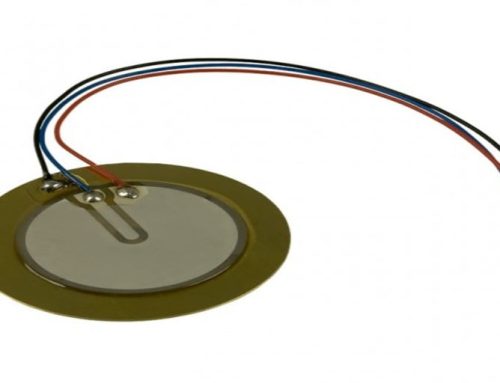

[…] In a simple view we can say a smart bulb contains multicolored LED’s. To know more about LED bulbs click here. […]
[…] transistors, and a high-frequency transformer. Its working is similar to an adapter circuit of LED or Smart bulbs but output current or load handling capacity is good to drive both modules (Sensor […]
[…] a bright light down onto the plane surface. Typically this light beam is emitted from a red color LED light. The emitted light bounces straight back towards the mouse again and is detected by a photocell, […]
[…] OLED works in the same way as convention LED (Light Emitting Diode) work, but instead of using crystal layers of N-type and P-type semiconductors, they use organic […]